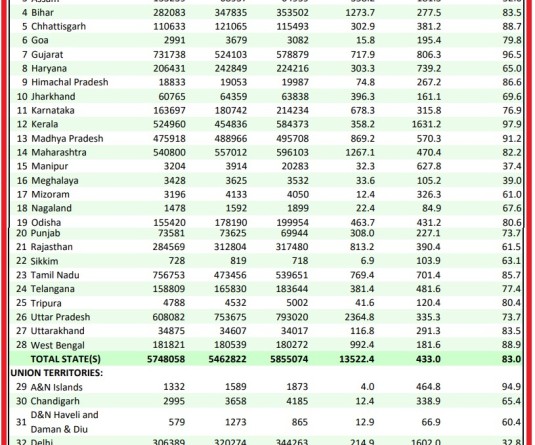
Morung Express news
Kohima | February 6
A national study indicates that Nagaland and most Northeastern states in the nation record the lowest work hours on employment-related activities.
On average, the time allocated to paid activities (work) by individuals each day in Nagaland is merely about 358 minutes, which approximates roughly 5-6 hours daily indeed.
The working hour is lower in rural areas, then in urban areas.
In rural areas, the study finds that the working hour measures 343 minutes per day and 386 in urban areas. This indicates that it falls below the national average of 7.8 hours per day in urban areas and 6.65 hours in rural areas. Compared to the national average, the time expended is markedly shorter than other states.
Released earlier in January this year, the comprehensive analysis conducted by the Ministry of Statistics and Programme Implementation is based on the Time Use Survey 2019. The study offers a detailed insight into work culture across states and sectors.
The report was drafted by a member of the Economic Advisory Council to the Prime Minister, Shamika Ravi.
While the Union Territories of Daman & Diu and Dadra & Nagar Haveli exceed 600 minutes of work per day (over 10 hours daily), states such as Goa or most Northeastern states consistently record under 360 minutes per day (under 6 hours daily) on average.
An average individual in Delhi dedicates 8.3 hours to work per day, the report cites.
Among the states and Union Territories, Nagaland is ranked within the bottom 5 for various parameters including overall working time or social groups—rural and urban sectors; economic sectors—primary, secondary, tertiary; gender; enterprise type; government or local body; and public or private, among others.
Meanwhile, the average time expended by individuals in rural areas is lower in Nagaland than in urban areas, indicating that rural regions record only 343 minutes per day and 386 minutes per day daily.
The data has been gathered from over 518,744 individuals across 138,799 households from throughout the country.
The economic sectors have been segmented into primary, secondary, and tertiary sectors. According to figures provided by the data, the lowest work time is recorded in the primary sector of the state.
Individuals in this category labor for only 296 minutes per day.
In the secondary sector, the working time is greater, at 363 hours and 383 minutes in tertiary sector.
The primary sector encompasses agriculture, fishing, forestry, and mining, etc. The report also explicitly highlights the strong association between work hours and economic output. One remarkable finding emerging from this analysis is that, irrespective of the nature of work and sectors, the Northeastern states of India register significantly shorter work-day compared to the rest of the country.
Within each economic sector, the Northeastern states– Assam, Nagaland, Manipur, Meghalaya, Mizoram, Arunachal Pradesh and Tripura – consistently report the lowest working time per day.
The study suggests that substantial economic gains can be achieved by augmenting the time devoted to employment-related activities, particularly in Northeastern states and government sectors where people work significantly fewer hours per day compared to the rest of the country.
States with extended average work hours, such as Gujarat, report higher per capita Net State Domestic Product (NSDP). The study implied that if individuals in a state devote 1% more time to economic activities, then the state’s NSDP will increase by 1.7%.




